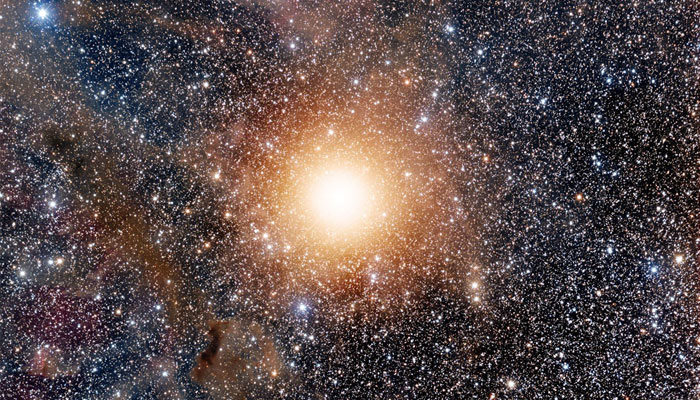Final countdown? Celebrity supergiant star Betelgeuse in its last flicker
An expert from Japan believes that "the core will collapse a few tens of years after the carbon exhaustion"
June 11, 2023

Scientists have started debating about when Betelgeuse — a red giant star around 500 to 600 lightyears away — is going to die in an explosion, as it glowing at 150% of its baseline brightness, becoming a candidate for a spectacular deep space event.
A more than 600 years old red supergiant makes up the left shoulder of the Orion constellation and is likely to become a supernova in the next 100,000 years however, a research paper on the giant from Tohoku University in Japan, remarked that the star could be at the end of its final life stage, the carbon-burning phase.
It is glowing at 150% of its normal brightness and is cycling between brighter and dimmer at 200-day intervals — twice as fast as usual — said an astrophysicist Andrea Dupree of the Harvard-Smithsonian Centre for Astrophysics.
Hideyuki Saio expects that "the core will collapse a few tens of years after the carbon exhaustion."
Some experts from Konkoly Observatory in Hungary state that Betelgeuse might have some thousand more years.
"One of the coolest things about Betelgeuse is that we’re watching the final stages of big star evolution play out almost in real-time for us, which we’ve never really been able to study in this much depth before," said Dr Sara Webb, an astrophysicist at Swinburne University of Technology in Australia.
László Molnár replied to the result with their findings that Betelgeuse is in the earlier helium-burning stage of its lifecycle.
Brightness of Betelgeuse
According to the scientists, Betelgeuse’s brightness varies over time, most predominantly following a 400-day-long cycle.
But the change in its brightness was observed beyond normal variations.
Astronomers maintain that the dimming of the red supergiant is because of the ejection of a huge matter which turned into dust after cooling down, hence blocking the star’s light.
This would have resulted in internal flow turbulence of the plasma of the star including the magnetic field.
What is Betelgeuse?
It is a red superstar with an age of at least eight million years. It is believed to be in the last stages of its life cycle, having burned through the hydrogen in its core.
Their life is spent by converting hydrogen into helium as their fuel. This energy prevents the star from collapsing under its own weight.
When a star runs out of hydrogen, then helium starts to burn into carbon which causes swelling in a star.
As all the fuel is burned out, and the remaining elements do not form fuel, against their own weight, the core collapses to form a solid neutron star, which the inrush of surrounding gas rebounds against to form a supernova.
If the star is in its carbon-burning phase, as Saoi predicts, then it could be on the shorter end of that, though it may still take several more centuries to burn through its remaining carbon.









